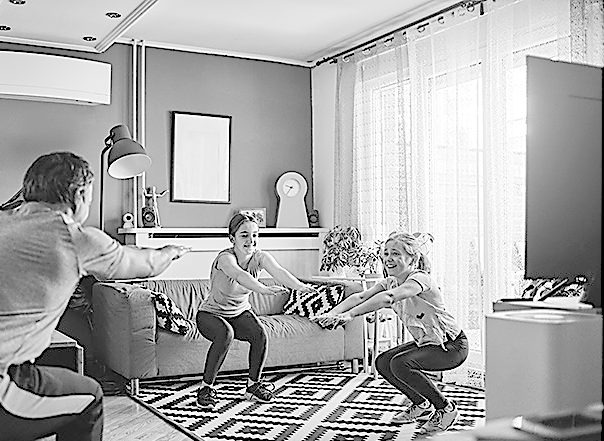
Staying healthy is a full-time job for people of all ages. While it might not always prove so easy to exercise or eat right, the benefits of healthy living are undeniable.
According to the Partnership to Fight Chronic Disease, “prevention” refers to helping people avoid getting sick or identifying diseases early so treatment can begin. Immunizations and disease screenings are two vital components of preventive care, but children, adolescents and adults can take more active roles in preventive care by embracing physical activity.
The Department of Health and Human Services notes that physical activity fosters normal growth and development and can help people feel better, function better, sleep better, and reduce their risk for many chronic diseases. Reducing risk for chronic disease keeps people out of the doctor’s office, or even the hospital, and it also can help save considerable amounts of money. One report from the Milken Institute estimated that high chronic disease and obesity rates are responsible for more than $1 trillion in lost productivity in the workplace every year. In addition, the National Commission on Prevention Priorities notes that increasing the use of five preventive services to 90 percent can save more than 100,000 lives in the United States each year. Such services include advising smokers to quit and offering medication or other assistance to help them and providing flu shots for people age 65 and older.
In recognition of the role exercise plays in preventive care, the DHHS recommends children, adolescents and adults follow these physical activity guidelines.
Children and adolescents
The DHHS recommends that children and adolescents between the ages of six and 17 should get 60 minutes or more of moderate-to-vigorous physical activity every day.
- Aerobic: Most of the 60 minutes or more per day should be either moderate- or vigorous intensity aerobic physical activity and should include vigorous-intensity physical activity at least three days a week.
- Muscle-strengthening: As part of their 60 minutes or more of daily physical activity, children and adolescents should include muscle-strengthening physical activity at least three days a week.
- Bone-strengthening: As part of their 60 minutes or more of daily physical activity, children and adolescents should include bone-strengthening physical activity at least three days a week.
Parents can consult with their children’s physicians to determine age-appropriate muscle- and bone-strengthening activities for their youngsters.
Adults
The DHHS advises adults to make a concerted effort to move more and sit less throughout the day. Some physical activity is better than none. Adults who sit less and do any amount of moderate-to-vigorous physical activity gain some health benefits.
For substantial health benefits, adults should get at least 150 minutes to 300 minutes of moderate-intensity, or 75 minutes to 150 minutes a week of vigorous-intensity aerobic physical activity each week. An equivalent combination of moderate- and vigorous-intensity aerobic activity can serve as a substitute. Ideally, aerobic activity should be spread throughout the week.
Adults should do muscle-strengthening activities of moderate or greater intensity that involve all major muscle groups two or more days a week, as the DHHS notes these activities provide additional health benefits.
These guidelines also apply to older adults, but older adults also should incorporate balance training into their exercise routines. In addition, the DHHS urges older adults to consult with their physicians about the appropriate level of effort for physical activity relative to their level of fitness.
People of all ages should include physical activity in their preventive health care routines. More information about exercise is available at www.health.gov.



